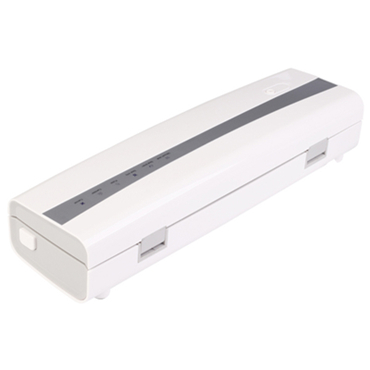The Shelf Life of Vacuum-packed Food
 How long can vacuum-packed food last?
How long can vacuum-packed food last?I have a friend who runs a lamb chop restaurant. There are several dishes such as braised lamb chops and roast lamb chops, which he would like to pack separately. He asked me questions about vacuum sealers and bags. He expected the customer to finish the lamb chops within three days or a week after they are taken home. Vacuum bags and vacuum sealers with suitable sizes would be a good choice.
You need to understand the characteristics of the product that you are going to pack. Flexible packaging can be adopted for braised lamb chops with a little broth. Because braised lamb chops have bones, the requirements for the packaging bag are more stringent. It is recommended that they should be eaten up on the same day after they are packed. It should be fine even if they are refrigerated for two or three days. Grilled lamb chops taste good while they are hot. When they are cold, they are not crisp. They will spoil over time. It's better to eat them while they are still hot. As for cooked meat, vacuum packaging can ensure that it will not rot in the process of transportation at room temperature. Ice bags should be used for cooked meat that is vacuum-packed in a foam box. Raw meat should be cooked at high temperature if it is stored or transported at room temperature. However, you need to be aware that the taste of cooked meat after being cooked again at high temperature is different from that of the food which is prepared while it is fresh.
If vacuum packaging is adopted without other auxiliary methods such as cooking at high temperature, the food can generally only be stored for 1 to 3 days at room temperature. If the food is refrigerated after it is vacuum-packed, it can be kept for one week to one month. The main function of food's vacuum packaging is to remove oxygen to prevent spoilage. The principle is relatively simple. Spoilage of food is mainly caused by the activities of microorganisms, and most microorganisms such as molds and yeasts need oxygen to survive. Vacuum packaging is based on this principle to remove oxygen in the packaging bag and food cells, so that microorganisms will lose their living environment.
Experiments have proved that the growth and reproduction speed of microorganisms will drop sharply when the oxygen concentration in the packaging bag is less than or equal to one percent. Most of microorganisms will be inhibited and stop reproducing when the oxygen concentration is less than or equal to 0.5 percent. It should be noted that vacuum packaging cannot inhibit the reproduction of microorganisms as well as spoilage and discoloration of food caused by reacting with enzyme, so other methods such as dehydration, microwave, refrigeration, etc. should be combined with it.
 In addition to inhibiting the growth and reproduction of microorganisms, vacuum packing can also prevent food from oxidation. There are plenty of unsaturated fatty acids in the food containing fat and oil. They can make food taste bad, spoil and lose Vitamin A and C by the effect of oxygen. The unstable substances in the food color make the color dark after they are affected by oxygen. Therefore, oxygen removal can prevent food from spoiling.
In addition to inhibiting the growth and reproduction of microorganisms, vacuum packing can also prevent food from oxidation. There are plenty of unsaturated fatty acids in the food containing fat and oil. They can make food taste bad, spoil and lose Vitamin A and C by the effect of oxygen. The unstable substances in the food color make the color dark after they are affected by oxygen. Therefore, oxygen removal can prevent food from spoiling.Generally speaking, fresh agricultural and sideline products or slightly processed meat products can be stored for 2 days at room temperature. If they are vacuum-packed, they can be kept for 6 days, and some can be stored for 18 days. Dried fruits last longer, even more than 12 months. Cooked food can be kept for a shorter time.
How to choose a vacuum sealer?
Having talked about so many matters related to the shelf life, how do I choose a vacuum sealer? There are two types of vacuum sealers. One is for the industrial use, and the other was for the household use. An industrial vacuum sealer is often used in the factory to vacuum-pack the processed food. A household vacuum sealer should be used at places such as my friend's restaurant mentioned above and homes, which can make the food in the restaurant or house more fresh and taste better.
Next: Sous Vide Cooking Technology (Part Four)
Previous: Selection of Vacuum Sealers